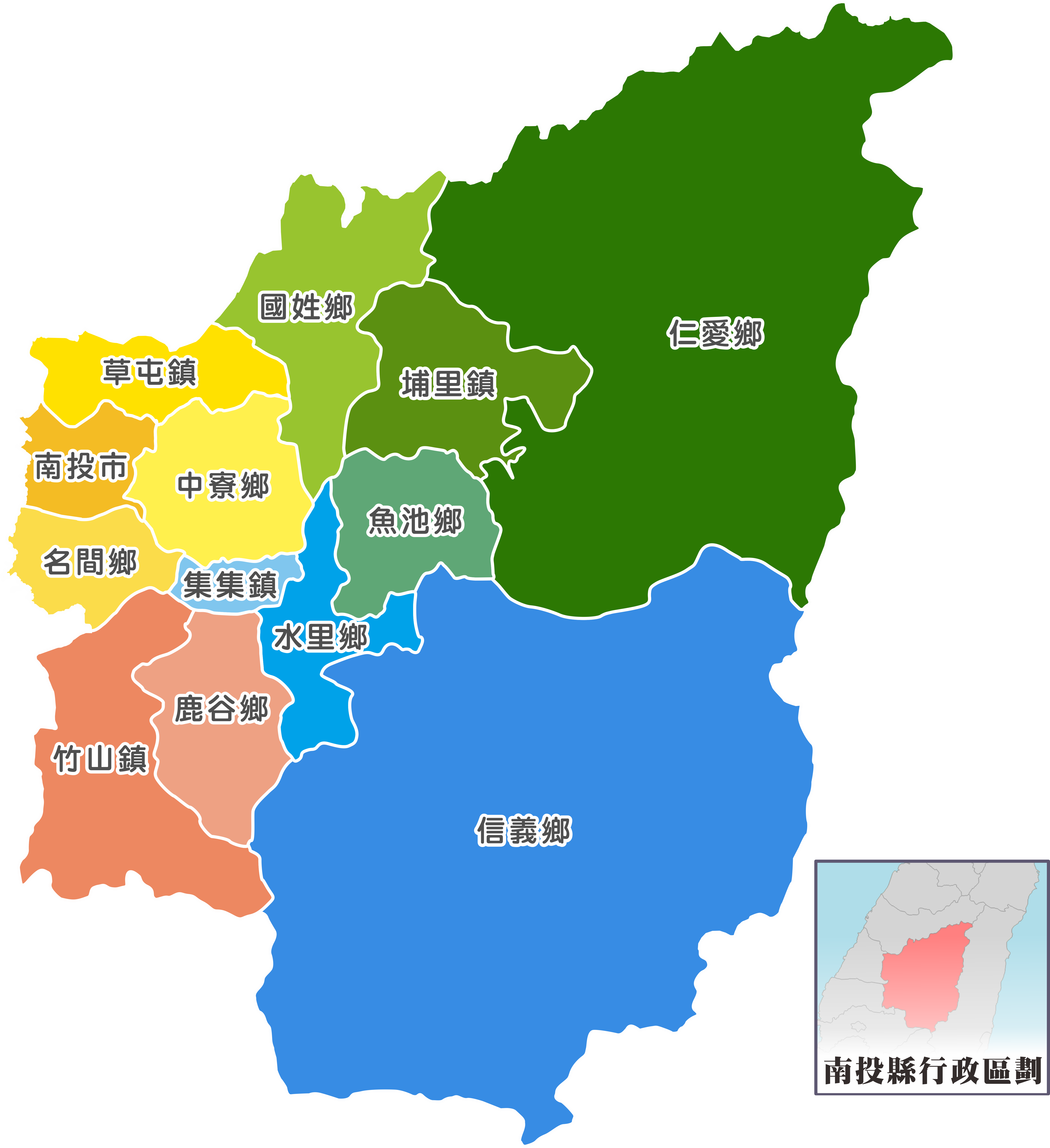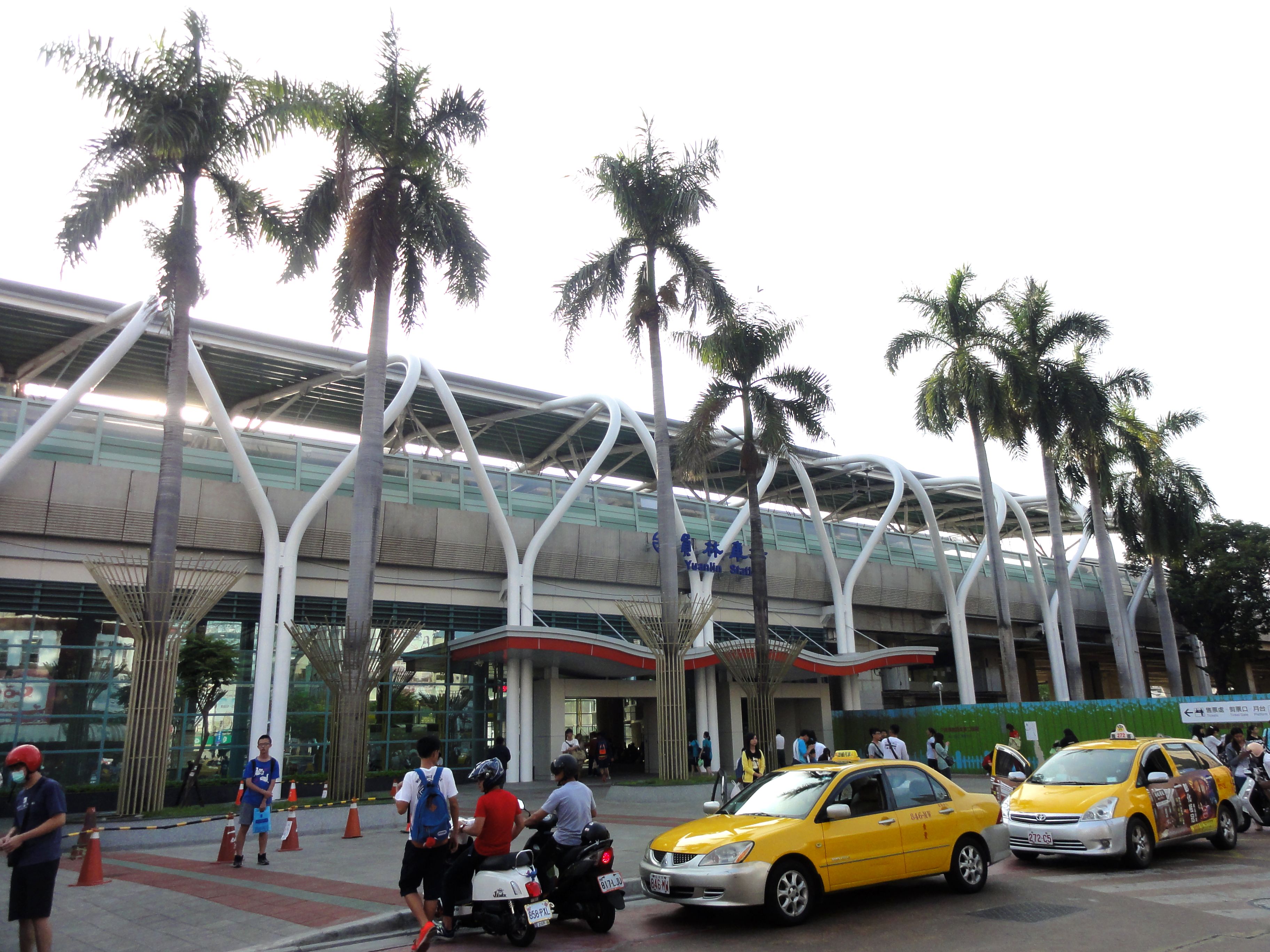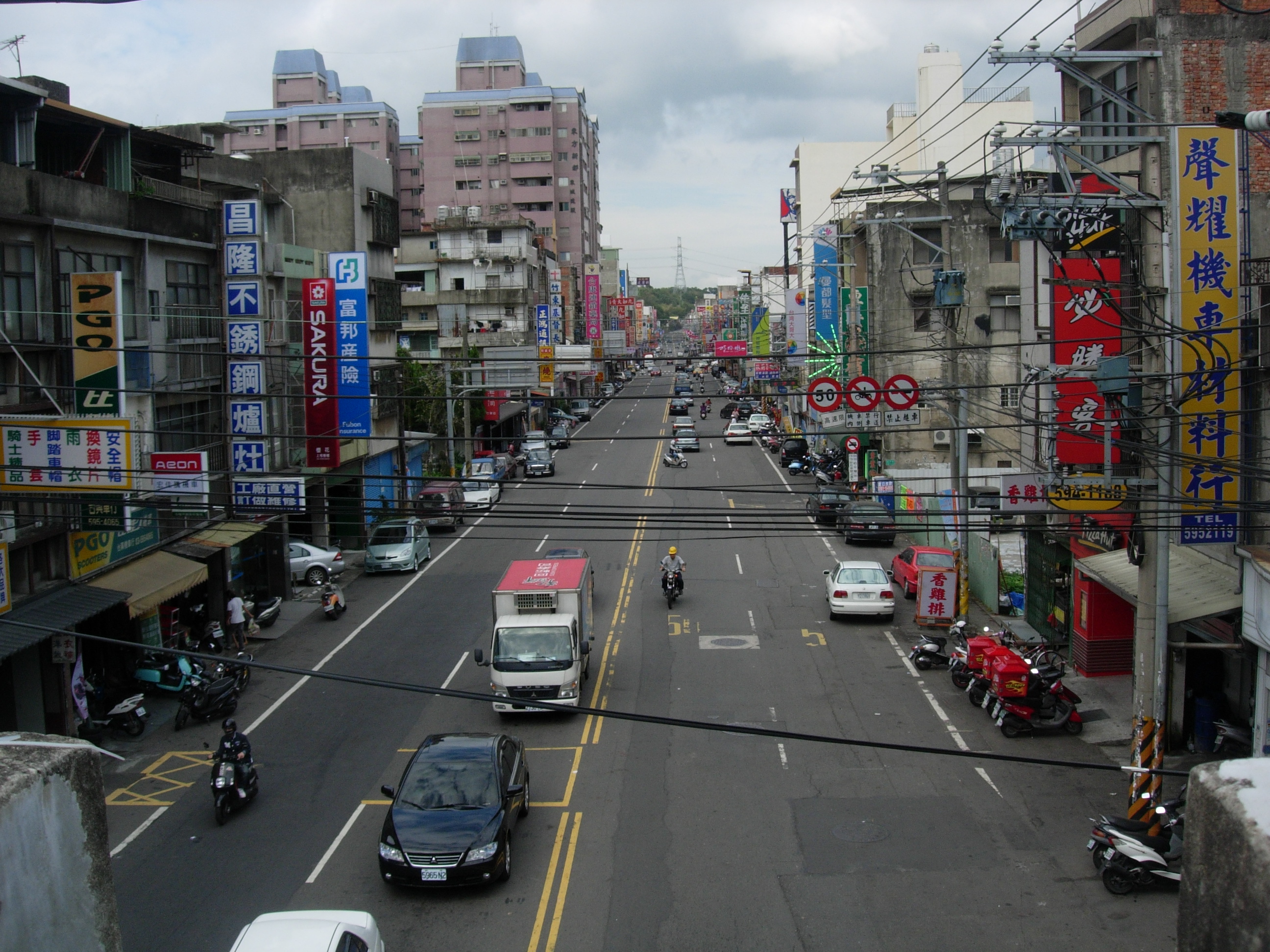|
Fengyuan District
Fengyuan District () is a District (Taiwan), district located in north-central Taichung, Taiwan on the south bank of the Dajia River. Fengyuan district is the third most populated district among former Taichung County, ranking after Dali and Taiping district. Fengyuan was recognized as Huludun in early times, meaning "gourd" in Chinese, for a gourd-shape pile of mud that was found in Fengyuan by the aborigines. The rice produced in Fengyuan is famous for its high quality and the bakery industry prospered in later decades. Because of its location of the intersection of Taiwan Railways Administration Western Trunk line and Dongshi District, Dongshi branch line, Fengyuan quickly expanded after World War II. It soon became one of the regions with great economic and cultural development in central Taiwan. After the merger of Taichung City and Taichung County in 2010, population and economic growth slowed slightly. so recently, fengyuan faces the challenge of being marginalized . Hist ... [...More Info...] [...Related Items...] OR: [Wikipedia] [Google] [Baidu] |
District (Taiwan)
Districts are administrative subdivisions of the Taiwan, Republic of China (Taiwan)'s special municipality (Taiwan), special municipalities of the second level and provincial city (Taiwan), provincial cities of the third level formerly under its Provinces of China, provinces. There are two types of district in the administrative scheme. Ordinary districts are governed directly by the municipality/city government with district administrators appointed by the mayors to four-year terms. The mountain indigenous district is a local government body with elected district chiefs as well as district council serving four-year terms. History The first administrative divisions entitled "districts" were established in the 1900s when Taiwan was Taiwan under Japanese rule, under Japanese rule. After the World War II, nine (9) out of eleven (11) Cities of Japan, prefectural cities established by the Japanese government were reform into provincial cities. These cities are Changhua, Chiayi, Hsin ... [...More Info...] [...Related Items...] OR: [Wikipedia] [Google] [Baidu] |
Suzhou
Suzhou (; ; Suzhounese: ''sou¹ tseu¹'' , Mandarin: ), alternately romanized as Soochow, is a major city in southern Jiangsu province, East China. Suzhou is the largest city in Jiangsu, and a major economic center and focal point of trade and commerce. Administratively, Suzhou is a prefecture-level city with a population of 6,715,559 in the city proper, and a total resident population of 12,748,262 as of the 2020 census in its administrative area. The city jurisdiction area's north waterfront is on a lower reach of the Yangtze whereas it has its more focal south-western waterfront on Lake Tai – crossed by several waterways, its district belongs to the Yangtze River Delta region. Suzhou is now part of the Greater Shanghai metro area, incorporating most of Changzhou, Wuxi and Suzhou urban districts plus Kunshan and Taicang, with a population of more than 38,000,000 residents as of 2020. Its urban population grew at an unprecedented rate of 6.5% between 2000 and 2014, which ... [...More Info...] [...Related Items...] OR: [Wikipedia] [Google] [Baidu] |
County-administered City
A county-administered city is a unit of administrative division in Taiwan. Under the administrative structure of Taiwan, it is at the same level as a township or a district. Such cities are under the jurisdiction of counties. It is also the lowest-level city of Taiwan, below a city and a special municipality. There are 14 county-administered cities currently. History The first administrative divisions entitled "city" were established in the 1920s when Taiwan was under Japanese rule. At this time cities were under the jurisdiction of prefectures. After the World War II, nine (9) out of eleven (11) prefectural cities established by the Japanese government were reorganized into provincial cities based on the ''Laws on the City Formation'' (). However, the populations of Hualien (Karenkō) and Yilan (Giran) were too low to become a provincial city, but they were of more importance than urban townships. Thus the ''Scheme on the Local Rules in Various Counties and Cities of Taiwan ... [...More Info...] [...Related Items...] OR: [Wikipedia] [Google] [Baidu] |
Nantou County
Nantou County (; Hokkien POJ: ''Lâm-tâu-koān''; Hakka PFS: ''Nàm-thèu-yen'') is the second largest county of Taiwan by area, located in the central part of the country. It is also the only non-coastal county in Taiwan. Its name derives from the Hoanya Taiwanese aboriginal word ''Ramtau''. Its mountainous area makes it a tourist destination; Sun Moon Lake is located in this county. Other well-known sightseeing of the county including Aowanda, Formosan Aboriginal Culture Village, Hehuanshan, Paper Dome, Qingjing Farm, Shanlinxi, Shuiyuan Suspension Bridge and Xitou. Notable cities in Nantou are Nantou City and Puli Town. The official butterfly of Nantou County is the broad-tailed swallowtail butterfly (''Agehana maraho''). Nantou's tung-ting tea is one of the most famous and high-quality oolong teas grown in Taiwan. History Early history Before the arrival of Han Chinese to Nantou, the Atayal, Bunun and Tsou tribes were distributed throughout the northern and ce ... [...More Info...] [...Related Items...] OR: [Wikipedia] [Google] [Baidu] |
Changhua County
Changhua County (Mandarin Pinyin: ''Zhānghuà Xiàn''; Wade-Giles: ''Chang¹-hua⁴ Hsien⁴''; Hokkien POJ: ''Chiang-hòa-koān'' or ''Chiong-hòa-koān'') is the smallest county on the main island of Taiwan by area, and the fourth smallest in the country. With a total population of 1.3 million, Changhua County is the most populous county in the Republic of China. Its capital is Changhua City and it is part of the Taichung–Changhua metropolitan area. History Early history There are 32 prehistoric burial sites in Changhua that date back 5000 years. The original name of the area was ''Poasoa'' (), so-named by the local indigenous tribes. Poasoa used to be inhabited primarily by the Babuza people, who have since been mostly assimilated by the Han people. Qing dynasty Qing rule in Taiwan began in 1683, and in 1684, Taiwan Prefecture was established to administer Taiwan under Fujian Province. The prefecture consisted of three counties: , and Zhuluo. Poasoa and modern-day Cha ... [...More Info...] [...Related Items...] OR: [Wikipedia] [Google] [Baidu] |
Yuanlin
Yuanlin (Hokkien POJ: ''Oân-lîm'') is a county-administered city in eastern Changhua County, Taiwan. It is the second largest settlement in the county, after the county seat of Changhua City. History The land around Yuanlin was cleared of trees and bushes, and fitted for cultivation since the Yongzheng era of the Qing dynasty (1723–1735). It was well developed about the 16th year of the Qianlong era. At first, people cut down the surrounding forests to build their houses. Gradually, only the round woodland was left, and the town was named (), meaning "the round woodland." Later the characters were changed to (Yuanlin). Yuanlin produces different kinds of fruits, and succade (fruit cooked in sugar syrup and encrusted with a sugar crystals) is one of its specialties. Republic of China After the handover of Taiwan from Japan to the Republic of China in 1945, Yuanlin was made the capital of the newly established Taichung County. In 1950, Changhua and Nantou were separated fr ... [...More Info...] [...Related Items...] OR: [Wikipedia] [Google] [Baidu] |
Taichung County
Taichung County was a county in central Taiwan between 1945 and 2010. The county seat was in Yuanlin Township before 1950 and Fongyuan City after 1950. History Taichung County was established on 26 November 1945 on the territory of Taichū Prefecture () shortly after the end of World War II. In the early years, Taichung County consists of most territory of Taichū Prefecture except the territory near cities of Taichū (Taichung) and Shōka (Changhua). The county is subdivide into districts (), which is reformed from Japanese districts (). The districts are divided into townships. On 16 August 1950, another division reform was implemented. The southern part of the county was separated and established Changhua County and Nantou County. The remaining Taichung County has territory equivalent to the Toyohara (Fengyüan), Tōsei (Tungshih), Taikō (Tachia), and Daiton (Tatun) in the Japanese era. In addition, districts in the remaining part of Taichung County was defunct. All town ... [...More Info...] [...Related Items...] OR: [Wikipedia] [Google] [Baidu] |
Township (Taiwan)
Townships are the third-level administrative subdivisions of counties of the Republic of China (Taiwan), along with county-administered cities. After World War II, the townships were established from the following conversions on the Japanese administrative divisions: Although local laws do not enforce strict standards for classifying them, generally urban townships have a larger population and more business and industry than rural townships, but not to the extent of county-administered cities. Under townships, there is still the village as the fourth or basic level of administration. As of 2022, there are totally 184 townships, including 38 urban townships, 122 rural townships and 24 mountain indigenous townships. 174 townships with 35 urban and 118 rural townships are located in Taiwan Province and 10 townships with 3 urban and 4 rural townships are located in Fujian Province. Penghu and Lienchiang are the only two counties that do not have urban townships. Statistics of ... [...More Info...] [...Related Items...] OR: [Wikipedia] [Google] [Baidu] |
Rice
Rice is the seed of the grass species ''Oryza sativa'' (Asian rice) or less commonly ''Oryza glaberrima ''Oryza glaberrima'', commonly known as African rice, is one of the two domesticated rice species. It was first domesticated and grown in West Africa around 3,000 years ago. In agriculture, it has largely been replaced by higher-yielding Asian r ...'' (African rice). The name wild rice is usually used for species of the genera ''Zizania (genus), Zizania'' and ''Porteresia'', both wild and domesticated, although the term may also be used for primitive or uncultivated varieties of ''Oryza''. As a cereal, cereal grain, domesticated rice is the most widely consumed staple food for over half of the world's World population, human population,Abstract, "Rice feeds more than half the world's population." especially in Asia and Africa. It is the agricultural commodity with the third-highest worldwide production, after sugarcane and maize. Since sizable portions of sugarcane and ma ... [...More Info...] [...Related Items...] OR: [Wikipedia] [Google] [Baidu] |
Hirohito
Emperor , commonly known in English-speaking countries by his personal name , was the 124th emperor of Japan, ruling from 25 December 1926 until his death in 1989. Hirohito and his wife, Empress Kōjun, had two sons and five daughters; he was succeeded by his fifth child and eldest son, Akihito. By 1979, Hirohito was the only monarch in the world with the title "emperor". He was the longest-reigning historical Japanese emperor and one of the longest-reigning monarchs in the world. Hirohito was the head of state under the Meiji Constitution during Japan's imperial expansion, militarization, and involvement in World War II. Japan waged a war across Asia in the 1930s and 40s in the name of Hirohito, who was revered as a god. After Japan's surrender, he was not prosecuted for war crimes, as General Douglas MacArthur thought that an ostensibly cooperative emperor would help establish a peaceful Allied occupation, and help the U.S. achieve their postwar objectives. His role durin ... [...More Info...] [...Related Items...] OR: [Wikipedia] [Google] [Baidu] |
Emperor Taishō
was the 123rd Emperor of Japan, according to the traditional order of succession, and the second ruler of the Empire of Japan from 30 July 1912 until his death in 1926. The Emperor's personal name was . According to Japanese custom, while reigning the Emperor is simply called "the Emperor". After death, he is known by a posthumous name, which is the name of the era coinciding with his reign. Having ruled during the Taishō era, he is known as the "Emperor Taishō". Early life Prince Yoshihito was born at the Tōgū Palace in Akasaka, Tokyo to Emperor Meiji and Yanagiwara Naruko, a concubine with the official title of ''gon-no-tenji'' (imperial concubine). As was common practice at the time, Emperor Meiji's consort, Empress Shōken, was officially regarded as his mother. He received the personal name of Yoshihito Shinnō and the title ''Haru-no-miya'' from the Emperor on 6 September 1879. His two older siblings had died in infancy, and he too was born sickly. Prince Yoshihito ... [...More Info...] [...Related Items...] OR: [Wikipedia] [Google] [Baidu] |
Emperor Meiji
, also called or , was the 122nd emperor of Japan according to the traditional order of succession. Reigning from 13 February 1867 to his death, he was the first monarch of the Empire of Japan and presided over the Meiji era. He was the figurehead of the Meiji Restoration, a series of rapid changes that witnessed Japan's transformation from an isolationist, feudal state to an industrialized world power. At the time of Emperor Meiji's birth in 1852, Japan was a feudal pre-industrial country dominated by the isolationist Tokugawa shogunate and the ''daimyō'' subject to it, who ruled over the country's 270 decentralized domains. By the time of his death, Japan had undergone an extensive political, economic, and social revolution and emerged as one of the great powers on the world stage. ''The New York Times'' summarized this transformation at the emperor's funeral in 1912: "the contrast between that which preceded the funeral car and that which followed it was striking indeed. ... [...More Info...] [...Related Items...] OR: [Wikipedia] [Google] [Baidu] |





